While it’s far less common than banana fruit, the flower of a particular banana species is edible and considered a delicacy.
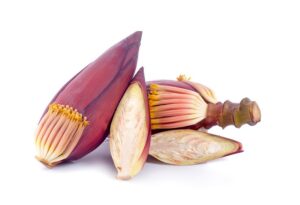
Preparing banana flower for cooking is a bit like unwrapping a present. You must peel off the outer layers to reveal the edible portion of this beautiful flower, which consists of the florets and the core (heart).
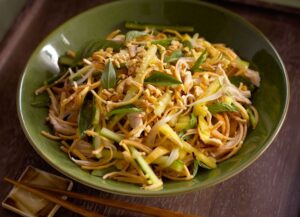
You can then use the outer petals, which typically aren’t eaten, as serving plates.
This delicious bloom is also known as banana blossom or banana heart. It’s a dark red-orange or maroon cone-like plant that’s frequently eaten in Asian countries, especially in curries, soups, salads, and cutlets.
Banana flower can also be steeped as a tea and taken as a nutritional supplement.
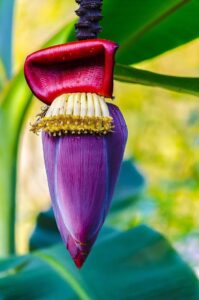
Its taste is supposed to be pleasant, slightly sweet, and flowery, though the sap between the petals should be removed before cooking because it has a bitter flavor. Soaking the petals in lemon water may help reduce any lingering bitterness.
Like the fruit, the flower’s leaves are perishable and will turn brown or black when exposed to air. Therefore, you shouldn’t peel the outer layers until you’re ready to use them.
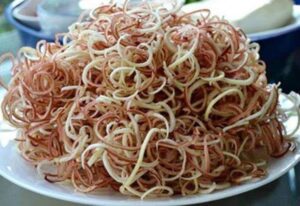
Banana flower is incredibly nutrient-dense, providing fiber, antioxidants, and high amounts of numerous minerals.
Banana flower may have offer digestive, blood sugar, cholesterol, bone health, and prostate health benefits. Banana flower is widely considered safe to eat, but anyone with a banana allergy should avoid it.
Banana blossom is edible raw, so consider topping your favorite smoothie with it for a lovely floral touch.
Banana blossom is edible raw, so consider topping your favorite smoothie with it for a lovely floral touch.
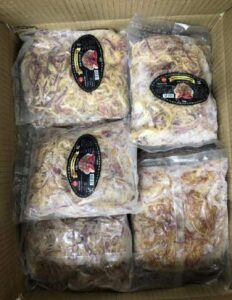
Otherwise, you can cook it with vegetables, meat, or fish stock to make a delectable soup.
Source: Internet
Dated: May 8th, 2025
Dated: May 8th, 2025
